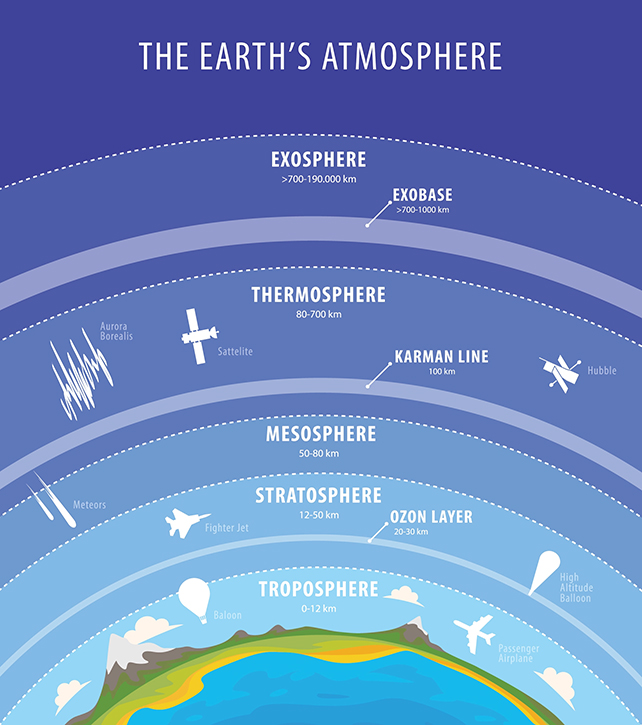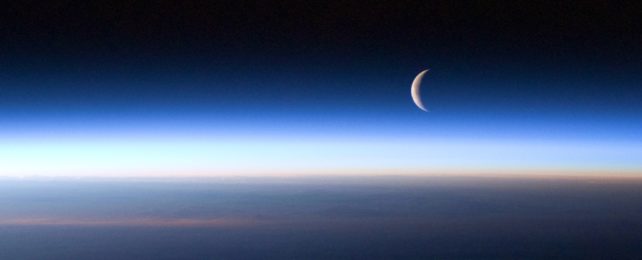Rising levels of carbon dioxide in Earth's atmosphere could exacerbate efforts to clean up our increasingly cluttered shell of orbiting space junk.
According to two new studies, the greenhouse gas has significantly contributed to the contraction of the upper atmosphere. This contraction has been hypothesized for decades; now, for the first time, it's been actually observed.
Some of the observed shrinkage is normal, and will bounce back; but the contribution made by CO2 is, scientists say, probably permanent.
This means that defunct satellites and other bits of old technology in low Earth orbit is likely to remain in place longer due to the reduction of atmospheric drag, cluttering up the region and causing problems for newer satellites and space observations.
"One consequence is satellites will stay up longer, which is great, because people want their satellites to stay up," explains geospace scientist Martin Mlynczak of NASA's Langley Research Center.
"But debris will also stay up longer and likely increase the probability that satellites and other valuable space objects will need to adjust their path to avoid collisions."
Descriptions of Earth's atmosphere generally set the layers at specific altitudes, but the truth is that the volume of gases surrounding our world isn't static. It expands and contracts in response to various influences, the biggest of which is probably the Sun.
Now, the Sun isn't static either. It goes through cycles of activity, from high, to low, and back again, roughly every 11 years. We're currently amid the 25th such cycle since reckoning began, a cycle that started around December 2019. The previous cycle, number 24, was unusually subdued even at the peak of solar activity, and this is what enabled Mlynczak and his colleagues to take measurements of atmospheric contraction.
Their attention was focused on two layers, collectively known as the MLT: the mesosphere, which starts at about 60 kilometers (37 miles) altitude; and the lower thermosphere, which starts at around 90 kilometers.

Data from NASA's TIMED satellite, an observatory collecting data on the upper atmosphere, gave them pressure and temperature information for the MLT for a nearly 20-year period, from 2002 to 2021.
In some lower layers of the atmosphere, CO2 creates a warming effect by absorbing and re-emitting infrared radiation in all directions, effectively trapping a portion of it.
Up in the much, much thinner MLT, however, some of the infrared radiation emitted by CO2 escapes into space, effectively carrying away heat and cooling the upper atmosphere. The higher the CO2, the cooler the atmosphere.
We already knew this cooling is causing the stratosphere to contract. Now we can see it's doing the same to the mesosphere and thermosphere above it too. Using the data from TIMED, Mlynczak and his team found that the MLT contracted by about 1,333 meters (4,373 feet). Approximately 342 meters of that is the result of CO2-induced radiative cooling.
"There's been a lot of interest in seeing if we can actually observe this cooling and shrinking effect on the atmosphere," Mlynczak says.
"We finally present those observations in this paper. We're the first to show the shrinking of the atmosphere like this, on a global basis."
Given that the thermosphere extends out to several hundred kilometers, that 342 meters might not seem like a lot. However, a paper published in September by physicist Ingrid Cnossen of the British Antarctic Survey in the UK showed that thermospheric cooling could result in a 33 percent reduction in atmospheric drag by 2070.
Atmospheric drag is what helps satellites and rocket stages deorbit after their missions end. This reduction in drag could prolong the orbital lifespan of defunct space junk by 30 percent by 2070, Cnossen found.
As more and more satellites are launched into low-Earth orbit, this is going to become an increasing problem, with no real mitigation measures in sight – either to decrease the number of satellites, or the amount of CO2.
"At every altitude, there is a cooling and a contraction that we attribute in part to increasing carbon dioxide," Mlynczak says. "As long as carbon dioxide increases at about the same rate, we can expect these rates of temperature change to stay about constant too, at about half a degree Kelvin [of cooling] per decade."
The research has been published in Journal of Geophysical Research: Atmospheres.
